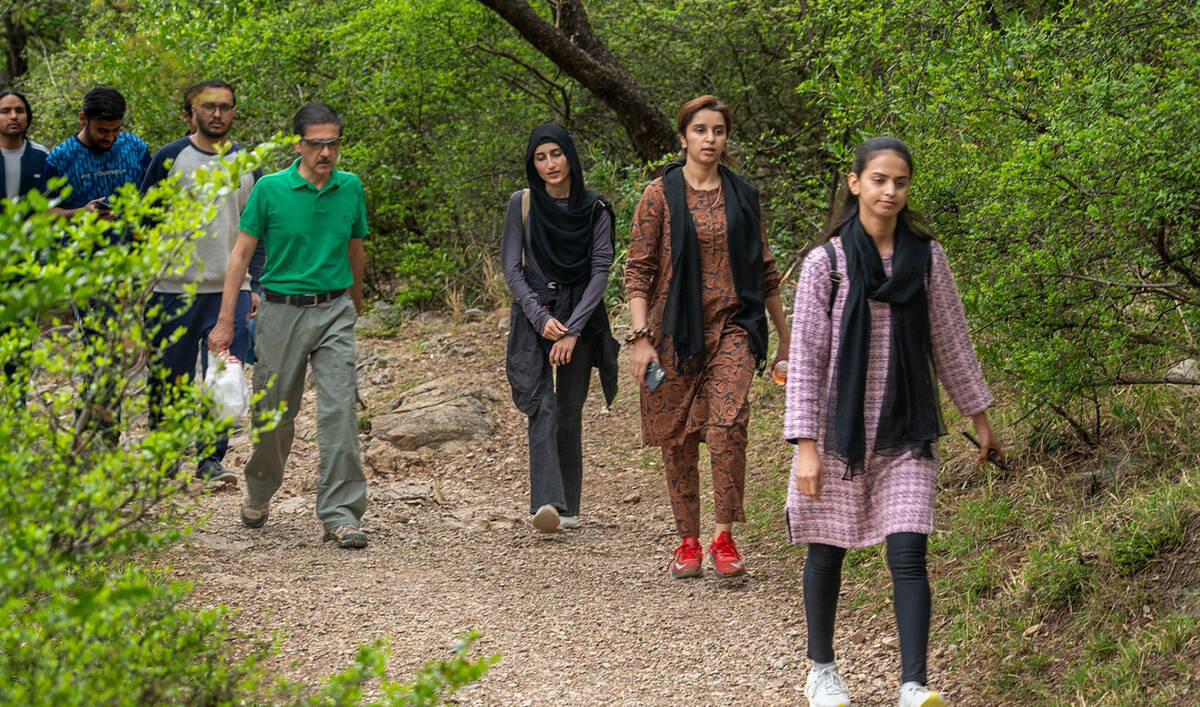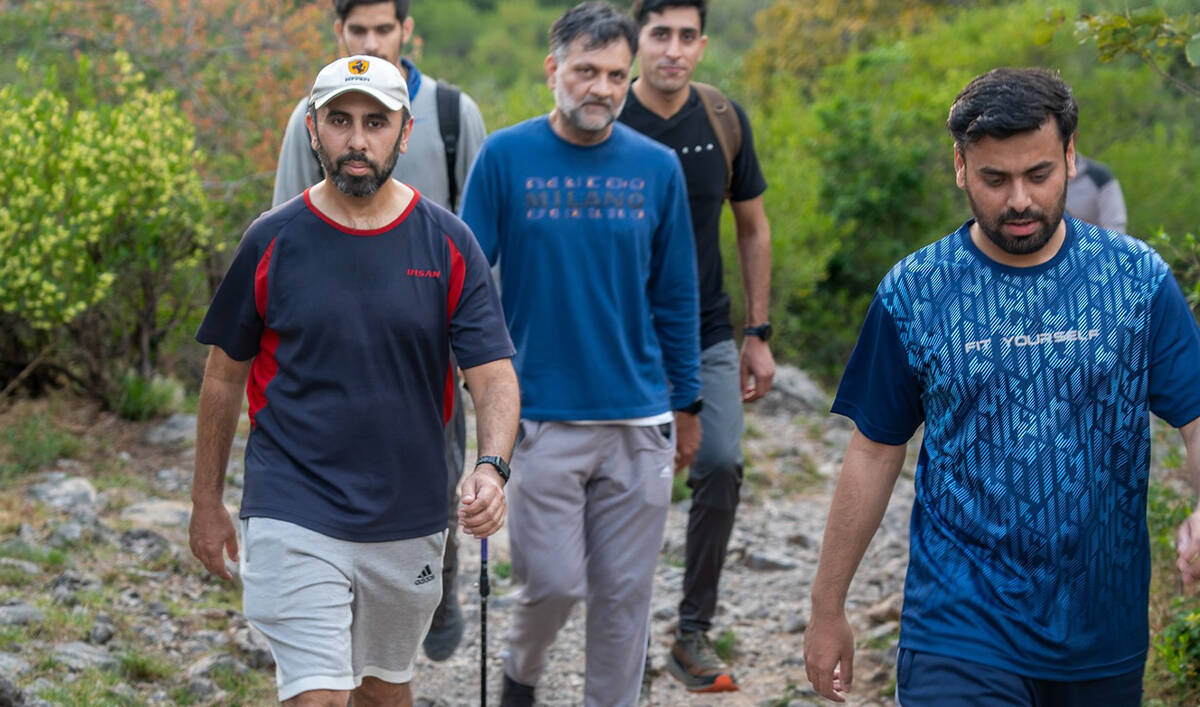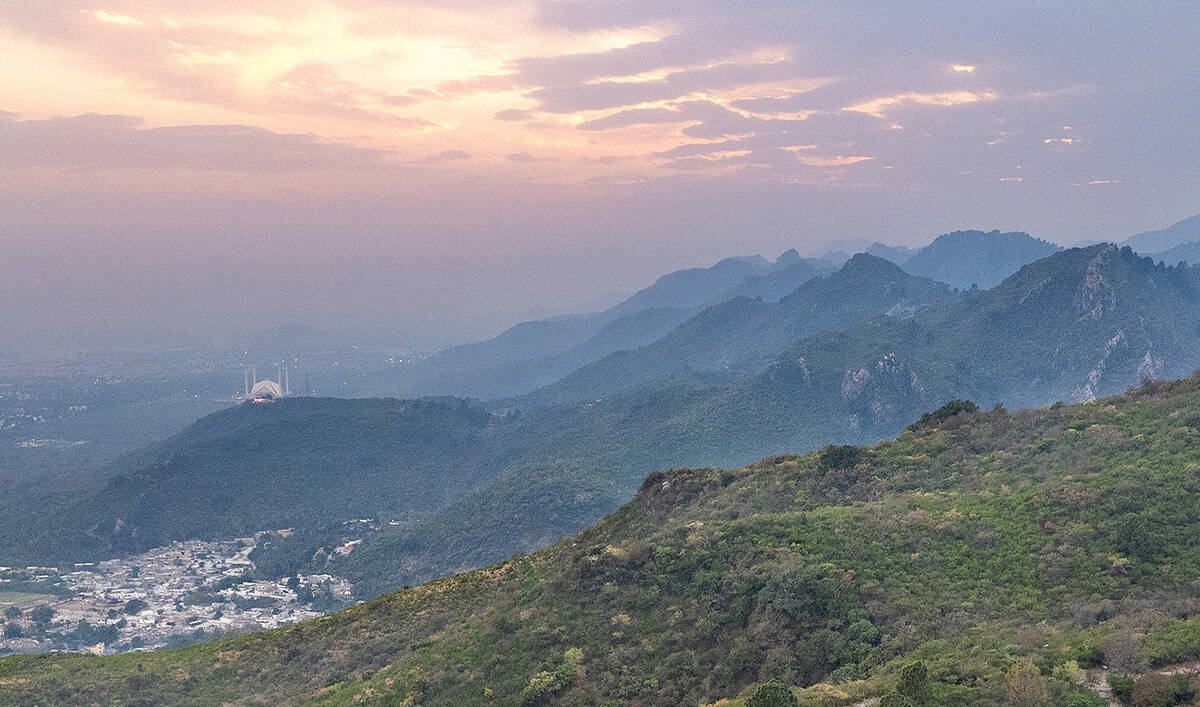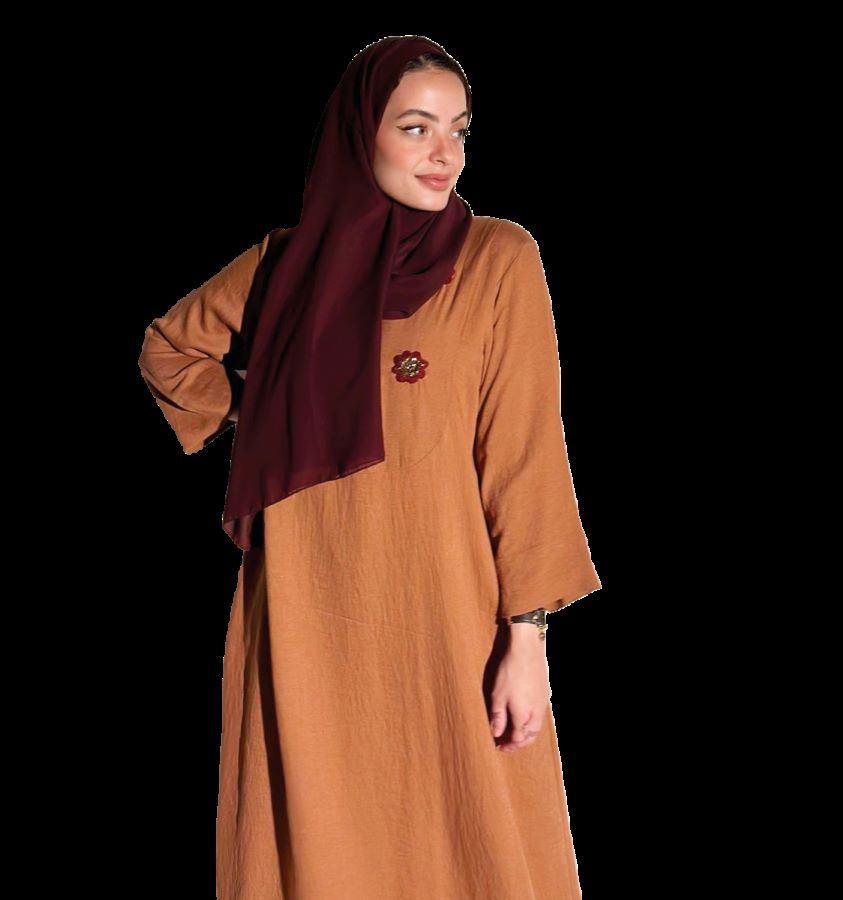RIYADH: “This is a group exhibition, created by a community of eclectic artists to exchange, talk, collaborate and build a connection in a healthy environment,” Dr. Ahlam Alshedouky, founder of Ahlam Gallery in Riyadh, tells Arab News.
Alshedoukhy is discussing “Stories in the Making,” a collection of 36 works by local and international artists which runs at the gallery until March 31. Approximately half of the participating artists were pre-selected for their unique stories, while the rest joined through an open call.
“Most of these works were created in the last year; one of the criteria is to present something new,” Alshedoukhy explains, adding that the exhibition puts “big lights on the artist’s journey and artist’s story.”
Jeddah-based Salah Jandali, founder of JZB Studio, says he created “functional art” for the exhibition — essentially four stools and a small table — that he hopes people will use to sit and reflect, or engage in conversation with others. The furniture blends traditional craftsmanship with contemporary design.
“Weaving was part of our daily lives. Today, it has become more of a decoration,” Jandali tells Arab News. “This affects demand — if people aren’t interested in this craft and no one works with it, over time, it will disappear.” But he believes that it “will gradually become widely accepted again.”
The designer sought out artisans to create the pieces. He collaborated with a palm weaver in Al-Ahsa, who worked from her home farm dyeing the palm fronds to match Jandali’s requirements. He also partnered with a carpenter known for intricate craftsmanship reminiscent of Japanese joinery. Bringing together techniques from both the east and west coasts, the work now comes full circle in the center of the Kingdom, Riyadh.
Abdullah Alkhorayef’s work for the exhibition, “The Origins,” explores where the designs for Saudi traditional clothing came from. Finding no concrete answers, he instead created his own version of the evolution of traditional wear in the region. “I decided to start at my own zero point, which is today,” he told Arab News.
“The Origins” comprises an installation made of black cotton linen featuring geometrical shapes that explore the origins of clothing, and a number of silkscreen prints on paper depicting the geometrical forms used.
The shapes within the black cotton linen installation were created by folding and sewing a simple rectangle in ways that cover the body. Each piece adds onto the previous one: so a simple draped cloth acquires an arm hole, then is divided in various ways — horizontally, vertically, and diagonally — combining mathematical and engineering concepts, to create garments that could be worn by humans.
Those shapes were then translated into visual compositions using the silkscreen technique and form an alphabet-like system that is personal to the artist, as if creating his own language for clothing.
“It all starts with simple shapes,” he says. “With all the chaos in the past 40 or 50 years, we lost the reasoning behind anything. With this exhibition, because of the cultural boom happening in Saudi, I just wanted to throw in a question for people to ask, challenge, and research.”
Saudi artist Zainab Abo Hussain’s tapestry “A Tide Once Near, Now Drifted to Memory” is an ode to her ancestry inspired by Islamic miniature painting, textiles and innovative construction techniques, as well as her own life.

Zainab Abo Hussain with her work 'A Tide Once Near, Now Drifted to Memory.' (Supplied)
“Childhood memories of my grandmother, who led our family while my grandfather (was) at work in remote areas, are a significant source of inspiration,” she says. “Evenings spent gathered around her, listening to her captivating stories, are cherished moments.”
The work aims to honor her grandmother by reimagining these narratives through contemporary miniature painting and manuscript art.
“Henna nights, in particular, provided precious opportunities for connection and storytelling,” Hussain continues. “These experiences deeply influenced my desire to capture and preserve such memories through my art.”
























